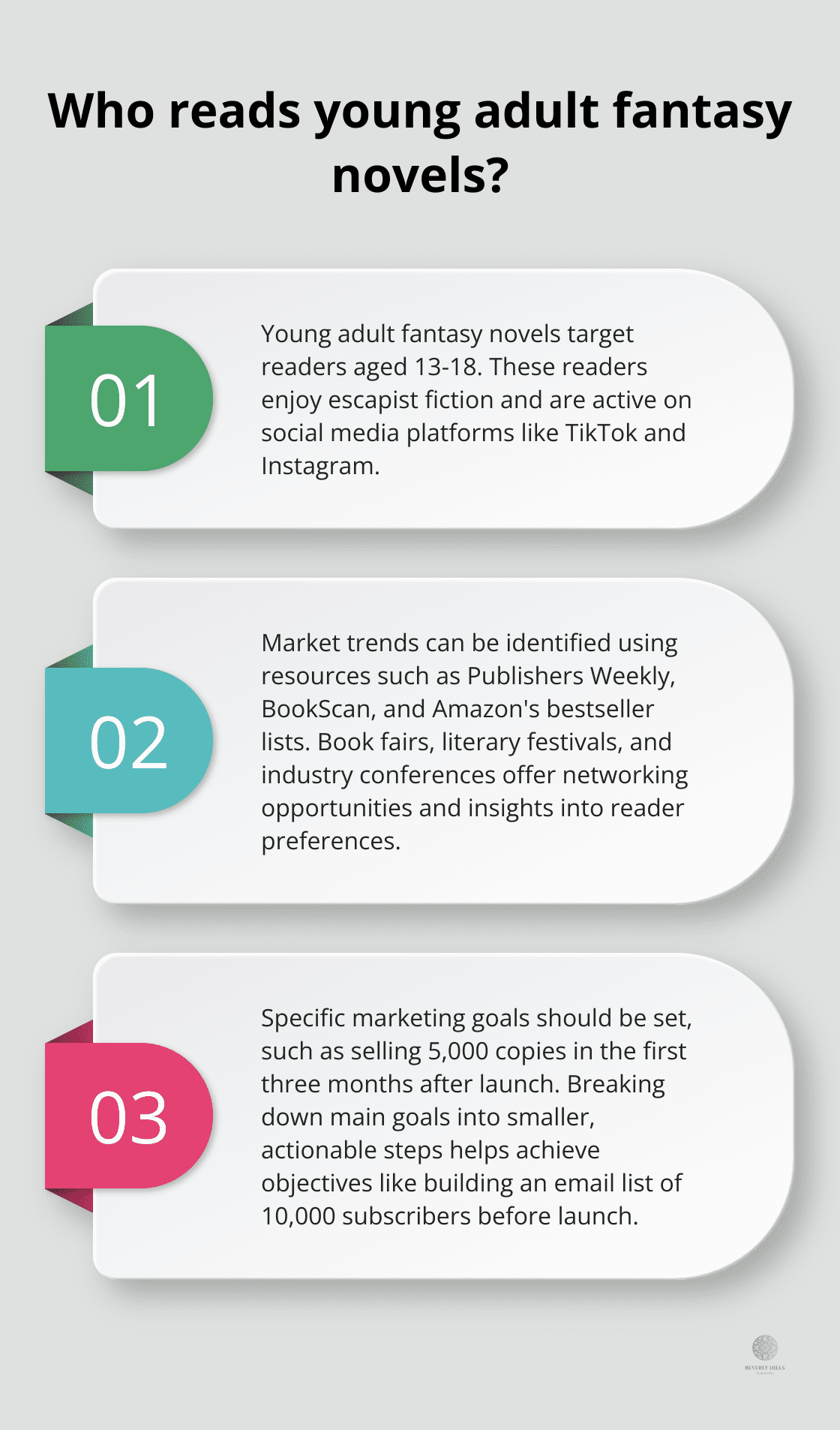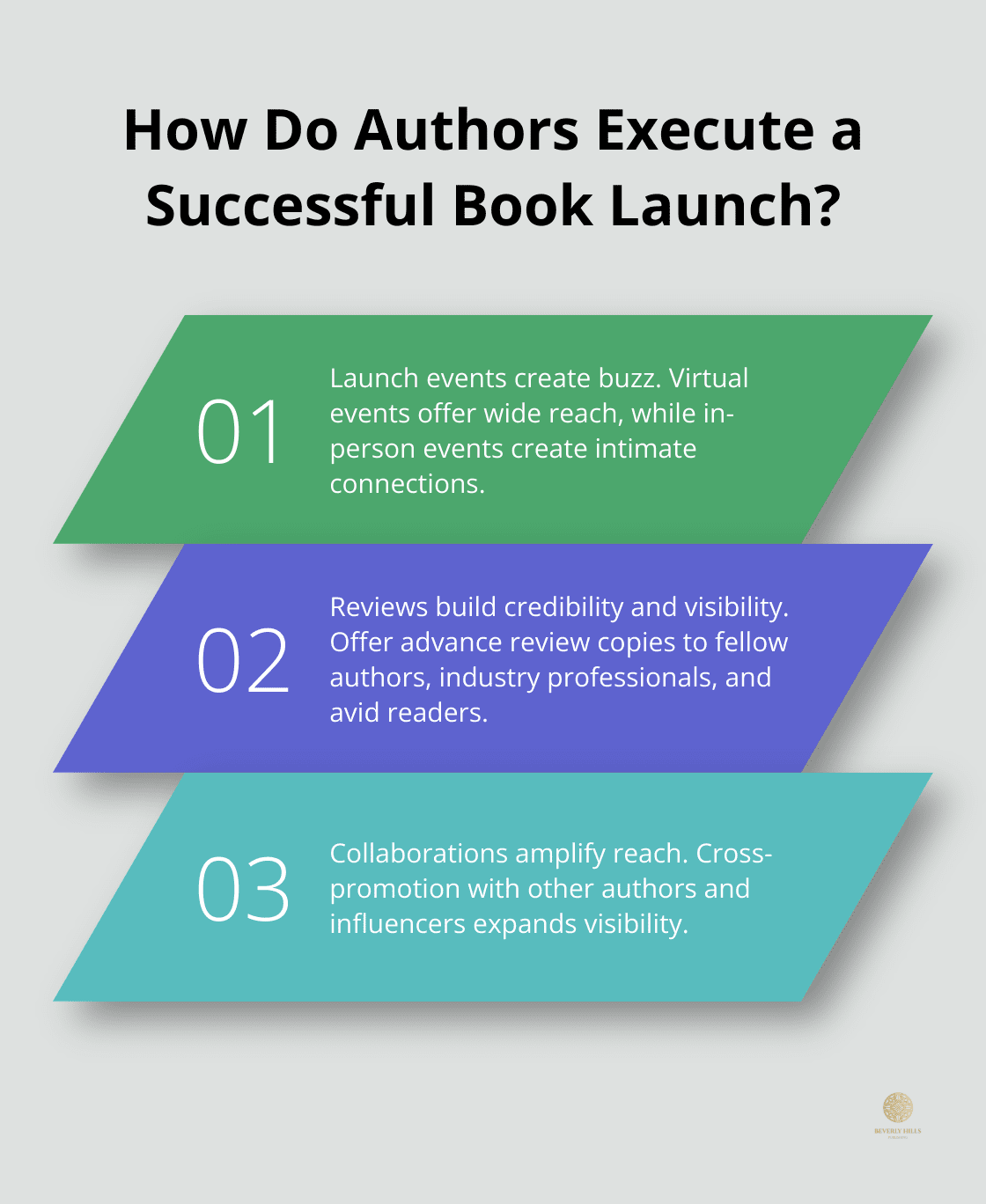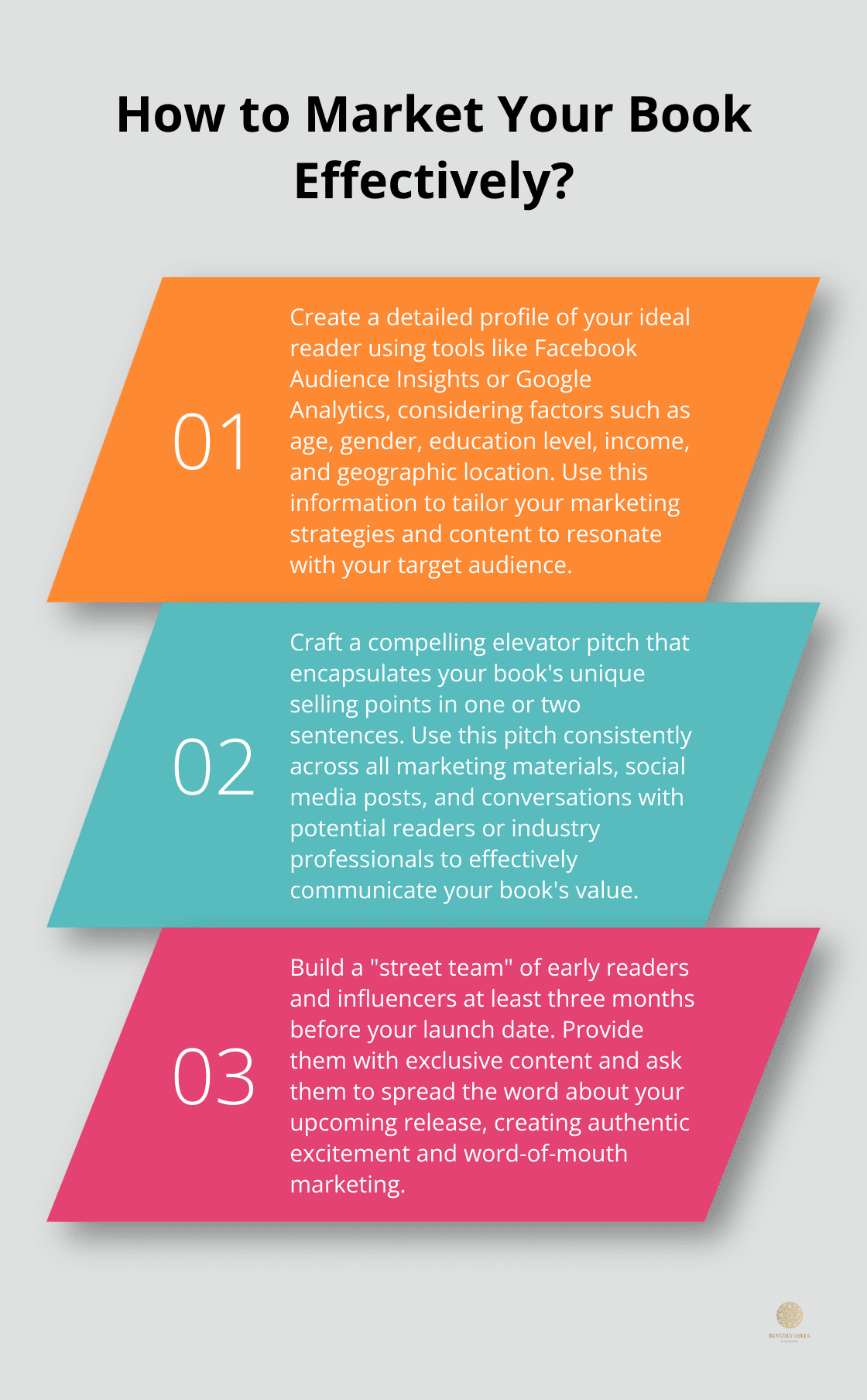At Beverly Hills Publishing, we know that launching a book is an exciting yet challenging endeavor. A well-crafted marketing plan for your book launch can make all the difference in reaching your target audience and achieving your sales goals.
In this post, we’ll guide you through the essential steps to create a comprehensive marketing strategy that will set your book up for success.
Who Is Your Book’s Ideal Reader?
Pinpointing Your Reader Demographics
Creating a detailed profile of your ideal reader forms the foundation of your book marketing plan. Consider factors like age, gender, education level, income, and geographic location. For example, if you write a young adult fantasy novel, your target audience might include 13-18 year olds who enjoy escapist fiction and actively use social media platforms (such as TikTok and Instagram).

Tools like Facebook Audience Insights or Google Analytics provide valuable data on demographics, interests, and online behavior of your existing audience if you have a website or social media presence.
Tapping into Market Trends
Current market trends in your genre play a vital role in shaping your marketing strategy. Use resources like Publishers Weekly, BookScan, or Amazon’s bestseller lists to identify popular themes in your category. For instance, if you write a self-help book, you might notice a trend towards mindfulness and mental health topics.
Book fairs, literary festivals, and industry conferences offer excellent networking opportunities with other authors and publishers. These events often feature panels discussing upcoming trends and reader preferences.
Setting Concrete Marketing Objectives
Your marketing goals should be specific, measurable, and time-bound. Instead of a vague goal like “sell many books,” try for something like “sell 5,000 copies in the first three months after launch” or “reach the top 100 in my Amazon category within the first week.”
Break down your main goal into smaller, actionable steps. If your goal involves building an email list of 10,000 subscribers before launch, set monthly targets and outline specific strategies to achieve them (such as running social media ads or offering a free chapter as a lead magnet).
Highlighting Your Book’s Unique Appeal
Identify what sets your book apart from others in your genre. This could be a unique perspective, groundbreaking research, or an innovative storytelling technique. For a non-fiction book, it might present a new approach to solving a common problem. For fiction, it could feature an unusual setting or a fresh take on a classic trope.
Create a compelling elevator pitch that encapsulates your book’s unique selling points in one or two sentences. This will prove invaluable for marketing materials, social media posts, and conversations with potential readers or industry professionals.
With a clear understanding of your target audience and well-defined goals, you’ve laid a solid foundation for your book marketing plan. The next step involves developing effective strategies and tactics to reach and engage your ideal readers.
How to Build a Powerful Marketing Strategy
Creating a compelling marketing strategy is essential for a successful book launch. A well-executed plan can propel an author from obscurity to industry leader. Let’s explore some proven tactics to make your book stand out in a crowded market.
Craft Your Author Brand
Your author brand is more than just a logo or a catchy tagline. It embodies your identity as a writer and sets reader expectations. Define your unique voice and the core themes of your writing. Are you the go-to expert for thrilling spy novels or the authority on mindful leadership? Once you establish your brand identity, apply it consistently across all your marketing materials and online presence.
Design Captivating Visuals
First impressions matter, especially in the book world. Your book cover often serves as the initial point of contact with potential readers, so it must capture attention and convey the essence of your story or message. Consider investing in professional design services. A study found that 79% of readers don’t go past the product page when making a purchase decision, highlighting the importance of a compelling book cover, an enticing blurb, and other key elements.

Extend your visual branding beyond the cover. Create a suite of appealing promotional materials including social media graphics, bookmarks, and posters. Consistency in design elements will reinforce your brand and enhance the cohesiveness of your marketing efforts.
Build Pre-Launch Excitement
Generating buzz before your book hits the shelves is vital. Start teasing content at least three months before your launch date. Share writing snippets, offer behind-the-scenes glimpses of your writing process, or reveal intriguing facts related to your book’s topic.
Try creating a “street team” of early readers and influencers. Provide them with exclusive content and ask them to spread the word about your upcoming release. This grassroots approach can create authentic excitement and word-of-mouth marketing (invaluable for new authors).
Harness the Power of Social Media
Social media platforms serve as indispensable tools for connecting with readers and building your author platform. Focus on excelling on one or two platforms rather than spreading yourself thin across all of them. Choose the platforms where your target audience is most active and engage consistently.
For example, if you target young adult readers, TikTok and Instagram might be your best bets. For non-fiction business books, LinkedIn could prove more appropriate. Post regularly, interact with your followers, and use relevant hashtags to increase your visibility.
Nurture Your Email List
Email marketing remains one of the most effective ways to reach readers directly. Start building your list early by offering something of value in exchange for email addresses (such as a free chapter or an exclusive short story).
Keep your subscribers engaged with regular updates about your writing process, upcoming events, and exclusive content. Recent statistics show that for every $1 spent on email marketing, the average return is $36, delivering a 3600% ROI. Additionally, 59% of consumers say marketing emails influence their purchase decisions.
As you implement these strategies, you’ll set the stage for a successful book launch that captures attention and drives sales. The next step involves putting your plan into action and maximizing your book’s visibility during the critical launch period.
Executing Your Book Launch Strategy
Create Buzz with Launch Events
Launch events generate excitement and provide a platform to connect with readers. Virtual events on Zoom or Facebook Live offer wide reach, while in-person events at bookstores or libraries create intimate connections with local readers.

Plan your event at least two months in advance. Prepare engaging content like readings, Q&A sessions, or behind-the-scenes insights. Promote your event across all your channels and consider partnerships with local businesses or organizations to expand your reach.
Leverage Reviews for Credibility
Reviews build credibility and visibility. Start by reaching out to your network of fellow authors, industry professionals, and avid readers in your genre. Offer them advance review copies (ARCs) in exchange for honest reviews.
Target book bloggers and reviewers who specialize in your genre. Websites like NetGalley or Edelweiss connect you with professional reviewers. While there’s no magic number of reviews that will cause Amazon’s algorithm to start circulating your book more, readers are more likely to buy books with reviews.
Amplify Your Reach Through Collaborations
Collaborations with influencers and other authors can exponentially increase your book’s visibility. Identify influencers whose audience aligns with your target readers. Offer them exclusive content, interviews, or even co-creation opportunities.
Cross-promotion with other authors in your genre provides mutual benefits. Organize joint virtual events, podcast appearances, or social media takeovers. This expands your reach and provides fresh content for your respective audiences.
Optimize Your Online Presence
Your Amazon author page and book listing often serve as the first points of contact for potential readers. Craft a compelling author bio that highlights your expertise and unique perspective. Use all available fields in your book listing, including the book description, editorial reviews, and author updates.
Update your author page regularly with new content, upcoming events, and blog posts. This keeps your profile fresh and engaging for repeat visitors. Try using Amazon’s A+ Content feature to enhance your book’s product page with rich media and additional information.
Sustain Momentum Post-Launch
A successful launch marks the beginning of your book’s journey. Maintain engagement through consistent marketing efforts. Schedule regular social media posts, continue to seek out review opportunities, and engage with your readers through Q&A sessions or live streams.
Consider creating additional content related to your book (blog posts, podcasts, or video series) to keep your audience engaged and attract new readers. This ongoing effort helps sustain interest in your book long after the initial launch excitement.
Final Thoughts
A marketing plan for book launch requires careful planning, creativity, and persistence. Authors must define their target audience, set clear goals, and develop a comprehensive strategy. Effective book marketing extends beyond the initial release and demands ongoing effort to maintain momentum and reach new readers.

The landscape of book marketing changes constantly. Authors must adapt to new trends and technologies, and adjust their approach based on audience response. Every author’s journey differs, so continual learning and experimentation prove essential (especially for those aiming to establish themselves as industry leaders).
At Beverly Hills Publishing, we help authors publish their books and build their brand through strategic marketing. Our integrated approach equips authors with tools to elevate their visibility and build a strong media presence. Success often stems from strategic planning combined with genuine passion for your work.















































































































































































































































